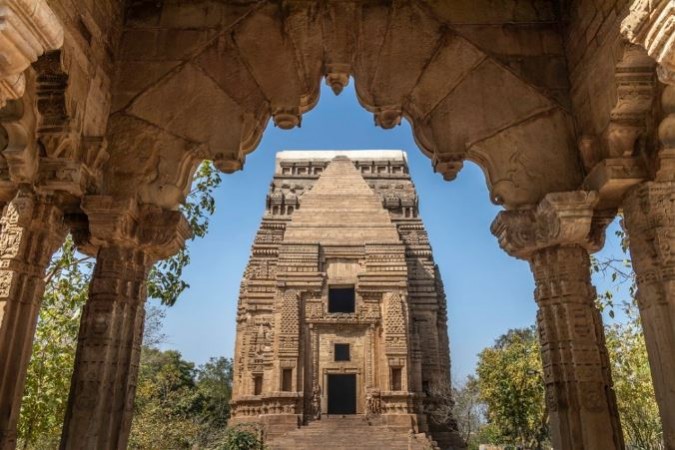
The temple is dedicated to the Lord Shiva, Vishnu and Matrikas. The Telika Temple, also known as the Telika Mandir, stands as an epitome of architectural grandeur in the historical city of Gwalior, India. With its intricate carvings, artistic mastery, and spiritual significance, this ancient temple has captured the imagination of visitors and scholars alike. In this narrative, we embark on a journey to explore the captivating history, remarkable features, and cultural importance of the Telika Temple.
The Telika Temple, dedicated to Lord Shiva, has a rich history dating back to the early medieval period. It was constructed during the reign of the Gurjara-Pratihara dynasty, which held significant influence in North India from the 8th to the 11th century. The temple is believed to have been built around the 9th century CE, and its architectural style reflects the characteristics of the Pratihara architecture that flourished during that time.
Also Read: The Mythological Stories and Symbolism Behind Greek Temples
The Telika Temple is renowned for its outstanding architectural brilliance. The temple is an excellent example of the Nagara-style architecture, which originated in the northern regions of India. It features a sanctum sanctorum (garbhagriha) housing the main deity, an antechamber (antarala), and a pillared assembly hall (mandapa). The exterior walls are adorned with captivating sculptures and intricate carvings that narrate mythological stories and depict various deities and celestial beings.
The temple's shikhara (tower) rises gracefully, crowned with an amalaka and a kalasha (a finial), typical of North Indian temple architecture. The shikhara is adorned with decorative motifs, miniature shrines, and intricate patterns, exhibiting the artistry of the skilled craftsmen of that era.
The most striking aspect of the Telika Temple is undoubtedly its sculptural artistry. The outer walls are replete with an array of finely carved figures, showcasing the genius of the artists who worked on the temple. Intricate sculptures of gods, goddesses, celestial nymphs, musicians, and other mythical creatures adorn the walls, each reflecting a unique aspect of Indian mythology and culture.
Also Read: Lakshmi Narasimha Temples: A Journey Through History and Rituals
One of the prominent sculptures found at the temple is that of Lord Shiva in various forms. The Nataraja form, depicting Shiva as the cosmic dancer, is particularly captivating and beautifully captures the essence of divine motion. Other notable sculptures include those of Lord Vishnu, Devi Parvati, Lord Ganesha, and many other deities and celestial beings.
The Telika Temple holds immense cultural and religious significance for the people of Gwalior and devotees of Lord Shiva. It is considered a place of profound spiritual energy and is thronged by pilgrims and visitors throughout the year, especially during religious festivals like Mahashivaratri.
The temple's architecture and sculptures provide invaluable insights into the artistic and cultural heritage of the region during the medieval period. The craftsmanship and attention to detail evident in the temple's design have made it a valuable archaeological site, attracting researchers, historians, and art enthusiasts from all over the world.
Also Read: Lepakshi Veerabhadra Temple: A Glorious Chronicle of Divine Grandeur
Over the centuries, the Telika Temple has faced the ravages of time and human intervention. To preserve this architectural gem for future generations, various conservation efforts have been undertaken by government authorities and heritage organizations. These efforts involve structural stabilization, restoration of damaged sculptures, and safeguarding the temple complex from environmental factors.
Additionally, there have been initiatives to raise awareness about the historical importance of the Telika Temple and promote responsible tourism to ensure its conservation for posterity.
The Telika Temple, with its awe-inspiring architecture and captivating sculptures, stands as a testament to India's rich heritage and cultural legacy. As we marvel at the intricate carvings and delve into the stories depicted on its walls, we are transported back in time to an era of great artistic accomplishment and spiritual devotion.
The Telika Temple is not just a place of worship but a living testament to the skill, craftsmanship, and devotion of the people who built it. As it continues to stand tall amidst the modern developments of Gwalior, it serves as a reminder of the glorious past and the need to preserve and cherish our cultural treasures for the generations to come.
Also Read: Sri Padmanabhaswamy Temple, Kerala: A Historic Abode of Spiritual Grandeur
Hampi: Unveiling the Ancient Marvels and Rich History of the Vijayanagara Empire